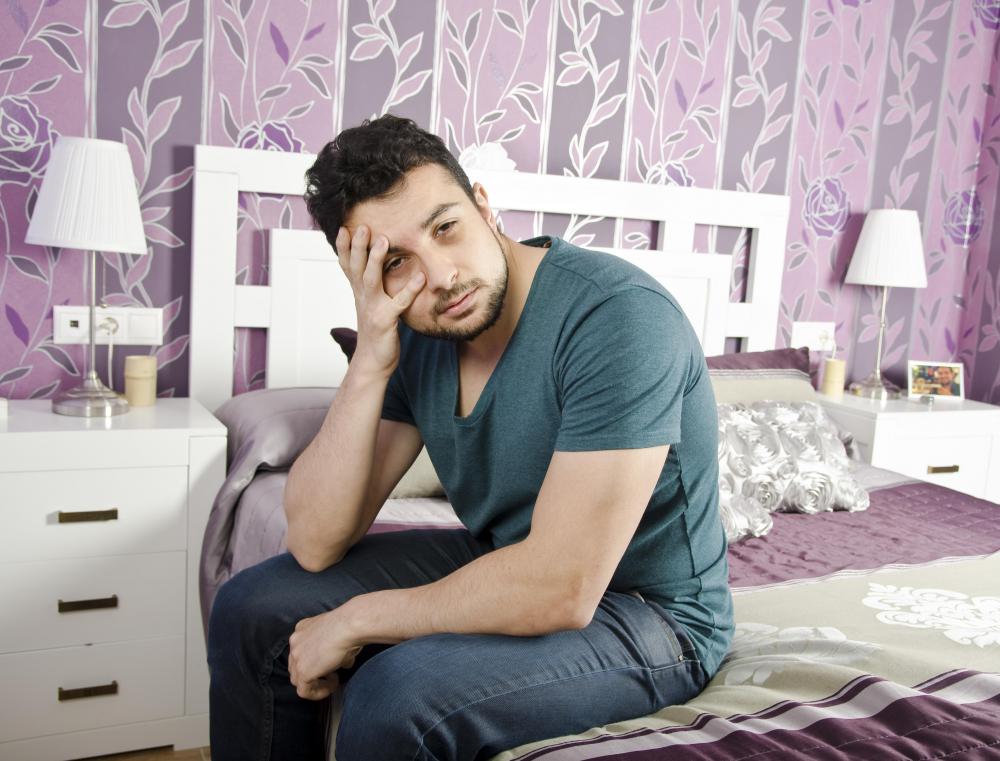At TheHealthBoard, we're committed to delivering accurate, trustworthy information. Our expert-authored content is rigorously fact-checked and sourced from credible authorities. Discover how we uphold the highest standards in providing you with reliable knowledge.
What Causes Facial Twitching?
The cause of most facial twitching remains unknown, but it may stem from stress, because the number of involuntary spasms increases under stressful conditions for some people. Rarely, facial twitching signals Tourette syndrome, a neurological condition linked to a brain chemical disorder. Eye twitching sometimes suggests facial nerve irritation or a nervous system disorder if it appears only on one side of the face, but this condition is also rare.
Facial twitching usually occurs in children, and is more common in boys than girls. There is no definitive cause for these spasms that affect the face or other parts of the body. Transient tic disorder appears when a child makes repeated movements that increase when he or she is nervous or under stress. Sound might accompany facial twitching, such as clearing the throat or snorting.

Frequent blinking represents a common symptom of childhood facial twitching that can occur numerous times each day. Some children might grimace, flare their nostrils, raise their eyebrows, or make repeated movements of the mouth. Pediatricians suggest parents ignore transient tic disorders to avoid making it worse. The condition generally goes away in a few months, especially when stress is reduced. If facial twitching becomes severe, medication and behavioral therapy might help.

Chronic tic disorder might denote a milder form of Tourette syndrome, a disorder that occurs every day for more than a year. These facial twitches commonly include sound. A person with chronic tic disorder might feel the urge to repeat facial twitching and be able to delay movement for short periods of time. He or she typically feels a sense of relief after twitching. These movements might also occur during sleep.

The disorder requires no treatment unless it disrupts normal activity. It occurs more often during periods of excitement, stress, or fatigue. Children between six and eight years old commonly exhibit symptoms, but these might go away in a few years. When the disorder first appears in older children, it could last a lifetime. In severe cases, medication might be prescribed, but side effects include dulled thinking.

Tourette syndrome is a nervous system disorder that might be an inherited condition affecting brain chemicals. It can be mild or severe, with facial tics occurring many times a day. This disorder usually appears in childhood or the teen years, and may improve in early adulthood. Tourette syndrome might disappear for a few years, but often returns.

Blepharospasm refers to facial twitching in the eye area, defined as frequent blinking from involuntary contractions of muscles around the eye. This disorder does not impair vision unless the blinking is severe. It may appear when exposed to bright light, but can also be provoked by fatigue and stress. Eye twitching typically gets worse as the day progresses and resolves after a night’s rest. Stress management and proper sleep might be helpful in mild cases.

Hemifacial twitching affects one side of the face, producing uncontrollable spasms. It describes a rare neurological condition caused by a nerve injury, tumor, or irritation of the facial nerve. Diagnosis consists of a brain scan and assessment of electrical activity of facial nerves. Hemifacial twitching might be treated with medication, a drug that paralyzes the muscle, or surgery to relieve pressure on nerves.
AS FEATURED ON:
AS FEATURED ON:



















Discuss this Article
Post your comments